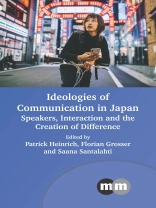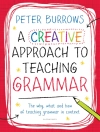This book presents case studies of ideologies of communication in Japan which respond to recent epistemological and methodological developments in the field and reflect the subject-wide shift from ideologies of language to ideologies of communication. Chapters explore a wide range of language contexts, from formal language learning settings to video games, smartphones and language use in couples and by immigrants. The authors use an array of innovative methodological approaches and theoretical perspectives, including language portraits, soundscapes and social space. The book also contains chapters that present positive perspectives on ideologies, examining how they can be created and mobilized to inspire specific groups to pursue their interests. Together the chapters give a complex and inclusive picture of language in Japan and the current breadth of the field of ideologies of communication.
表中的内容
Tables and Figures
Contributors
Acknowledgements
Conventions
Chapter 1. Florian Grosser, Patrick Heinrich, Saana Santalahti: Ideologies of Communication in Japan: An Introduction and Overview
Part 1. International Encounters
Chapter 2. Riikka Länsisalmi: Constructing the ‘seikatsusha’ through Japanese as a Second Language: Ideologies of Communication in Language Education Policy and Locally Produced Learning Materials
Chapter 3. Kayoko Hashimoto: Monolingual Approach and Multilingual Learners: A New Phase of Japanese Language Education Policy
Chapter 4. Jae Di Bello Takeuchi: L2 Japanese Speakers and Language Ideologies: The Impact of Monolingual Bias on Beliefs about Unwanted Code-Switching
Chapter 5. Florian Grosser: Emotion, Competence and Context in a Multilingual Relationship: A Metapragmatic Perspective
Chapter 6. Patrick Heinrich: Ameyoko Shopping Street in Tokyo: Urban Space as an Ideological Palimpsest
Part 2. Mediated Communication in the Digital Age
Chapter 7. Wesley C. Robertson: Orthography, Identity and Ideology: Script Variation as a Social Practice in Japan(ese)
Chapter 8. Eugenia Diegoli: Normative Practices of Linguistic Correction on Hatsugen Komachi: A Corpus-Assisted Approach to (Meta)discourses around Linguistic ‘Mistakes’
Chapter 9. Lorenzo Moretti: Enregisterment, Indexicality and Iconisation in Contemporary Japanese Fictionalised Orality: Creativity of Independent Game Developers in Written Video Game Dialogue
Chapter 10. Francesco Vitucci: Language Ideologies and Gender Stereotypes: Representation of Adult Masculine Speech in the Japanese Dub of the American Series Never Have I Ever
Part 3. Minoritized Communities
Chapter 11. Takeshi Nakashima: Ableism toward Language by People with Disabilities: The Relationship between the Body and Ideology
Chapter 12. Saana Santalahti: Sowing Seeds of Knowledge for Future Generations: Possibilities to Empower Ainu Language and People through Tourism
Chapter 13. Yumiko Ohara: Questioning, Challenging and Reformulating Dominant Language Ideologies in Japan: The Cases of Ainu and Uchinaaguchi
Saana Santalahti, Florian Grosser, Patrick Heinrich: Conclusion: The Creation and Contestation of Difference
Index
关于作者
Saana Santalahti is a doctoral student in the Doctoral Programme in Language Studies (HELSLANG) at the University of Helsinki, Finland. She is especially interested in the sociolinguistics of Ainu and the Ryukyuan languages.












